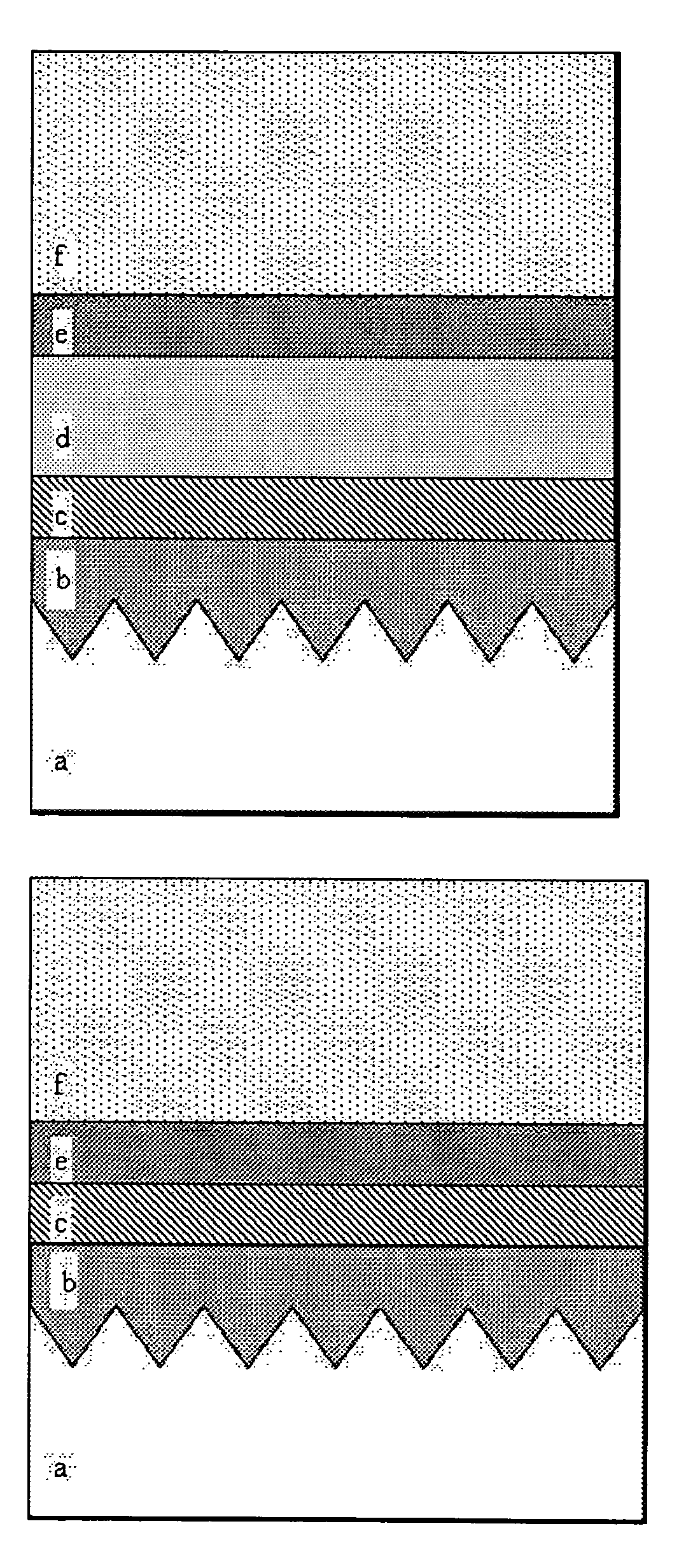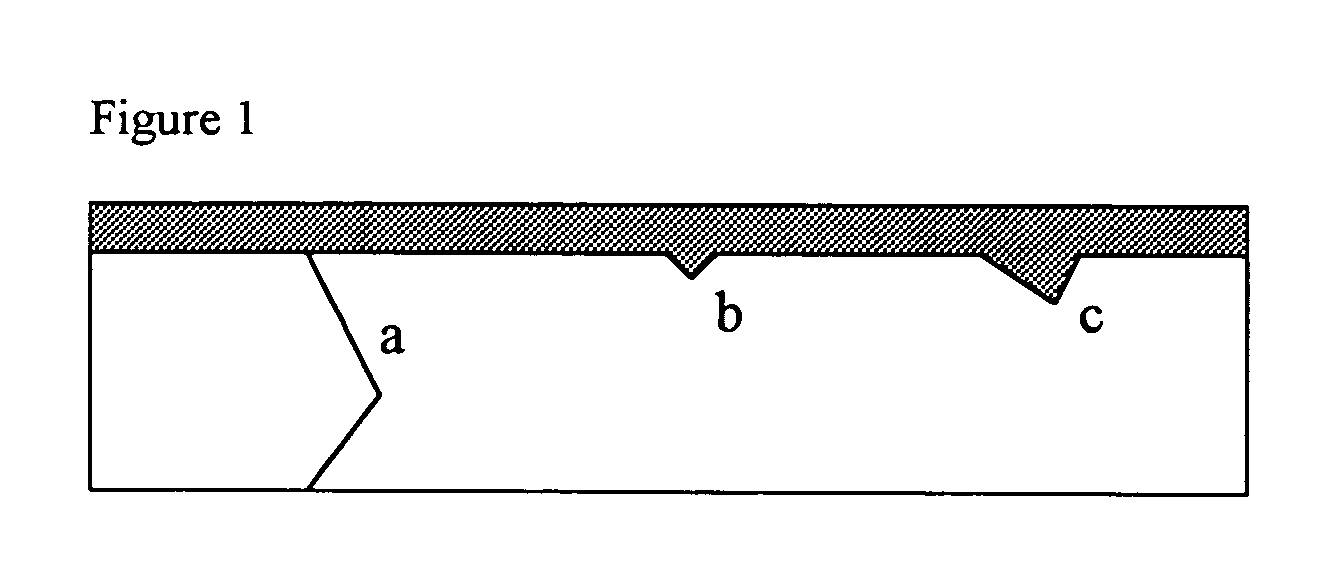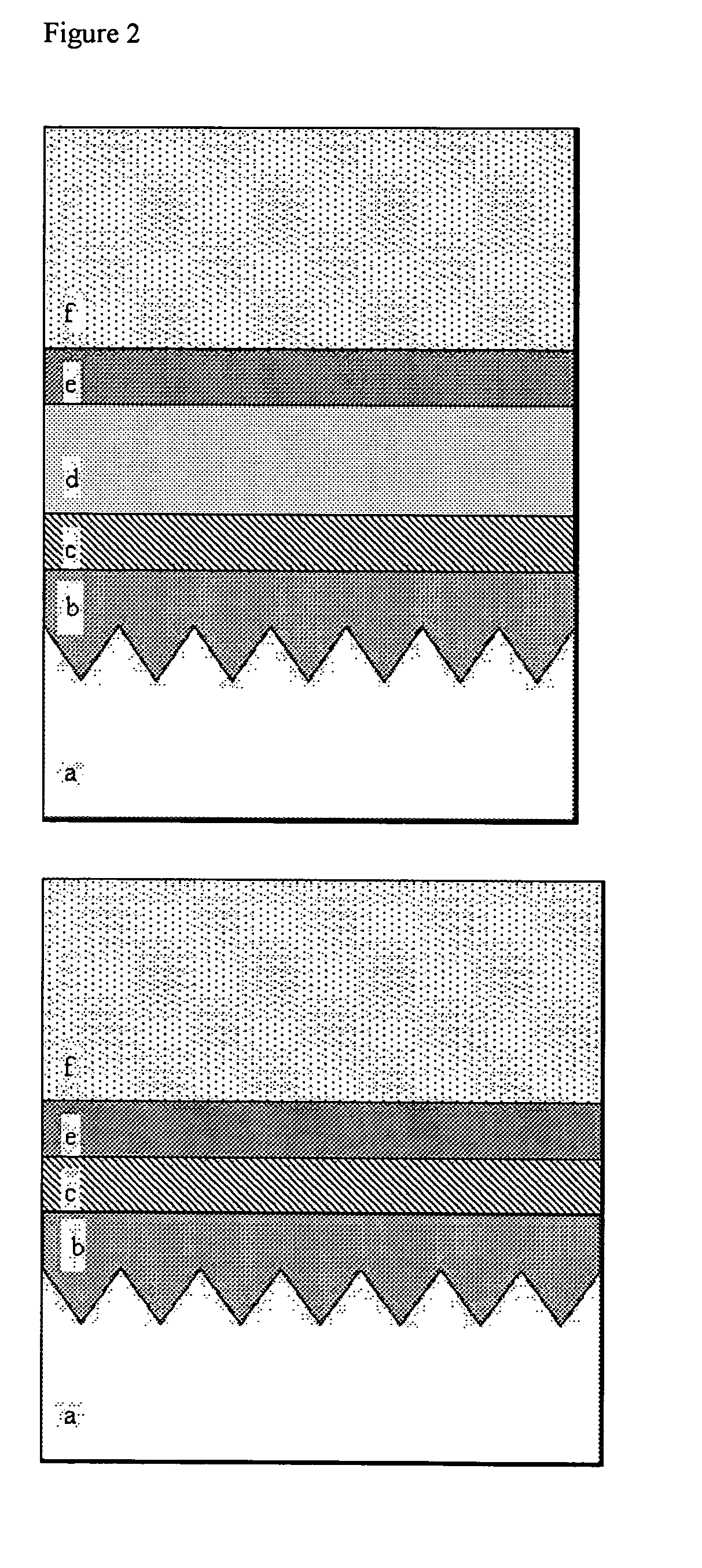Aluminum phosphate coatings
a technology of aluminum phosphate and coatings, applied in the direction of biocides, chemical coatings, liquid/solution decomposition, etc., can solve the problems of limited environmental durability of oxidizing or harsh environments, alloys are subject to rapid degradation, and the entire surface is degraded, so as to enhance the hydrophobic
- Summary
- Abstract
- Description
- Claims
- Application Information
AI Technical Summary
Benefits of technology
Problems solved by technology
Method used
Image
Examples
example 1
[0066]A preferred method for depositing a component film / coating of the inventive material coating is with a clear chemical precursor solution, with the solution preferably containing an aluminum salt and phosphate esters in an organic solvent. A solution used to deposit inventive material coatings with a 2 to 1 molar ratio of aluminum to phosphorus is made by dissolving 264 g of Al(NO3)3.9H2O in 300 mL ethanol. In a separate container, 25 g P2O5 is dissolved in 100 mL ethanol. These solutions are mixed together. The resulting solution is diluted with ethanol to a concentration of about 0.2 moles Al / L solution.
example 2
[0067]1″×2″ 304 stainless steel foil is coated with the precursor solution of Example 1. The sample is heated at 500° C. for 15 minutes in a preheated furnace. A small part of this heat treated sample is prepared for transmission electron microscopic study of cross section of the inventive material coating on the substrate. FIG. 4 shows the thickness of the coating to be about 100 mn. The inventive material coating is well-adhered to the stainless steel surface, and the micrograph demonstrates the continuous, dense and hermetic nature of the coating.
example 3
[0068]Titanium-based alloys tend to oxidize readily, causing changes in the desired properties of the alloy. Titanium can be alloyed with other elements (aluminum, for example) to increase oxidation resistance, but mechanical properties may suffer. An ultra-thin coating which can protect titanium alloys from oxidation is greatly desired. The inventive material has been shown to protect titanium aluminide alloys from oxidation. The solution described in Example 1 is deposited on a Ti-46Al coupon and cured by heating at 600° C. for 2 minutes. Samples coated by this method were exposed to 800° C. in ambient air for 100 hours, along with an uncoated sample. The weight change from oxidation was significantly lower for the coated specimens. FIG. 5 shows a photograph of coated and uncoated samples after the test.
[0069]Weight change after 800° C., 100 hour exposure in ambient air (mg / cm2)
[0070]
coated sample 10.000034coated sample 20.000033uncoated sample0.017
PUM
| Property | Measurement | Unit |
|---|---|---|
| thick | aaaaa | aaaaa |
| roughness | aaaaa | aaaaa |
| roughness | aaaaa | aaaaa |
Abstract
Description
Claims
Application Information
 Login to View More
Login to View More - R&D
- Intellectual Property
- Life Sciences
- Materials
- Tech Scout
- Unparalleled Data Quality
- Higher Quality Content
- 60% Fewer Hallucinations
Browse by: Latest US Patents, China's latest patents, Technical Efficacy Thesaurus, Application Domain, Technology Topic, Popular Technical Reports.
© 2025 PatSnap. All rights reserved.Legal|Privacy policy|Modern Slavery Act Transparency Statement|Sitemap|About US| Contact US: help@patsnap.com



